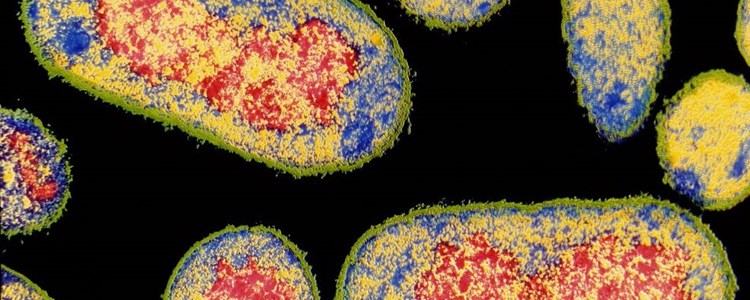Investigating the role of cryptic prophages within their bacterial hosts: NCTC new accessions
Thursday 20 August
Recently, the National Collection of Type Cultures, NCTC placed into its collection some genetically-modified strains of K-12 E. coli (NCTC 14365 -14374) derived from the wild-type strain NCTC 14364. These have been used in a very interesting study by Wang et al., (2010) who in their paper sought to prove that cryptic prophages rather than being passive genetic cargo of the bacterial genome, actively help the cell respond to various environmental stresses.
Phages are the most abundant entity in the biosphere, surpassing bacteria in numbers by a factor of 10. Prophages which may constitute up to 20% of bacterial genomes are phage genomes that have become incorporated into the bacterial chromosome. These bacteria are referred to as lysogens. The well-studied K-12 series of E. coli has acquired 1600 kbp of DNA since its divergence 100 million years ago from Salmonellae, including 9 cryptic prophages which comprise 3.6% of its genome. Wang et al. (2010), genetically-modified strains of the E. coli K-12 series by knocking out 1 or all 9 cryptic prophage genes from the genome to study the physiological effects on the cell of their absence.
Each of the nine phage-deletion strains as well as the ∆9 strain were monitored for growth against the wild-type. It was found that growth in both poor and rich media was reduced the most with the removal of CP4-57, proof that prophages confer the ability to grow more rapidly and obtain higher yields on nutrients.
Quinolones, which make up 18% of the antibiotic market, were shown using phenotype microarrays to dramatically inhibit growth of the ∆9 strain using as little as half the MIC known to inhibit growth of the wild-type. Similarly, prophage-deleted strains were more susceptible to β-lactam antibiotics than the wild type with azlocillin at 5µg/ml repressing their growth up to 146-fold in comparison.
With regards to environmental stress, ∆9 was completely inhibited in high salt conditions (6% NaCl and 6% KCl) as opposed to the wild-type strain which adapted and grew well. ∆9 also showed a significant decrease (245-fold) in resistance to oxidative stress (30mM H2O2 for 15 min) and a 90-fold decrease in resistance to acid stress (pH 2.5 for 30 min). Cells lacking CPS-53 were shown to have reduced viability when challenged with H2O2. There was however no difference in the ability of ∆9 to withstand heat stress (65°C for 10 min) in comparison with the wild-type.
Prophages were found to enhance the ability of E. coli to form biofilms as evidenced by the almost complete absence of biofilm formation in minimal media by ∆9 as compared to the wild-type. It was also found that of the 9 cryptic prophages, rac and e14 affected biofilm formation the most.
This study shows that in some cases, the emergence of resistance to antibiotics and environmental stresses arises from the acquisition of phage DNA by bacteria, suggesting that inhibition of key phage-encoded proteins may be a novel means of combatting antibiotic resistance. Active (plaque-forming) prophages can be excised from their host by stressors like mitomycin C which trigger a DNA repair/SOS response. Only e14 was inducible in this way while the other 8 prophages were not, an indication that they have become phage fossils whose genes rather than serving the phage, now serve the host. Reproductive success of the lysogenic bacteria harbouring these new genes in some cases leads directly to the evolutionary success of the resident prophage within the chromosome. Essentially, bacteria have evolved to use tools obtained from their “former” enemy, the phage to adapt to their increasingly challenging environments. Having these very important strains in the NCTC collection is an asset and hopefully these will be the subject of further research to elucidate the role of cryptic prophages in their bacterial hosts.
Written by Juandem Agendia, the National Collection of Type Cultures
Reference
Wang, X., Kim, Y., Ma, Q., Hong, S. H., Pokusaeva, K., Sturino, J. M., & Wood, T. K. (2010). Cryptic prophages help bacteria cope with adverse environments. Nature communications, 1(9), [147]. https://doi.org/10.1038/ncomms1146